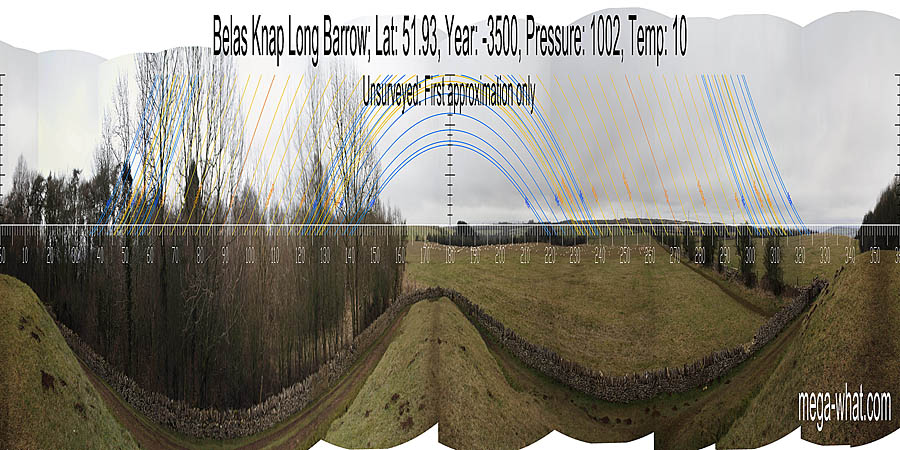 Excavated in 1863-65 and 1928, restored 1929-31, this c.70m long mound has a generally north-south axis. The north end has a forecourt with a false entrance.
There was never a passage or chamber behind it but six skeletons found there are thought to be of later, bronze age, date.
A chamber at the south end of the mound contained skull fragments. On the western side, a single chamber contained the remains of fourteen people.
Opposite this, on the eastern side, another chamber had twelve. Under the mound, between these two chambers, the original excavation reported a circle of stone slabs.
Towards the south end of the eastern side, one more chamber had the remains of two males and two females.
Excavated in 1863-65 and 1928, restored 1929-31, this c.70m long mound has a generally north-south axis. The north end has a forecourt with a false entrance.
There was never a passage or chamber behind it but six skeletons found there are thought to be of later, bronze age, date.
A chamber at the south end of the mound contained skull fragments. On the western side, a single chamber contained the remains of fourteen people.
Opposite this, on the eastern side, another chamber had twelve. Under the mound, between these two chambers, the original excavation reported a circle of stone slabs.
Towards the south end of the eastern side, one more chamber had the remains of two males and two females.
 This panorama (Vscale x4) shows the view and approximates fit of landscape with luni-solar patterns but is not accurately scaled / aligned as the necessary survey has not been done yet.
There are quite possibly distant hills or mountains hidden in the cloud to the west but the east is totally obscured.
This panorama (Vscale x4) shows the view and approximates fit of landscape with luni-solar patterns but is not accurately scaled / aligned as the necessary survey has not been done yet.
There are quite possibly distant hills or mountains hidden in the cloud to the west but the east is totally obscured.
Tomb orientation is almost north-south, well beyond the luni-solar zone and this may be the reason for the false entrance. Thus the east and west side chambers probably represent significant positions that face significant solar points.
This site was visited on 8th February 2018 but was not surveyed. The panorama was assembled by a commercial algorithm but due to cloud there is no absolute reference to reality and orientation is very approximate.
- Two English Long Barrows have been surveyed: Stoney Littleton & West Kennet.
- Another visited but unsurveyed English site is The Rollright Stones.
References / Links
- http://www.english-heritage.org.uk/visit/places/belas-knap-long-barrow/
- English National Monument Register list-entry
- O'Neil, H.E. & Grinsell, L.V. 1960 Gloucestershire Barrows. Proc of the Bristol and Gloucestershire Arch Soc, Vol.79, 88-9.
